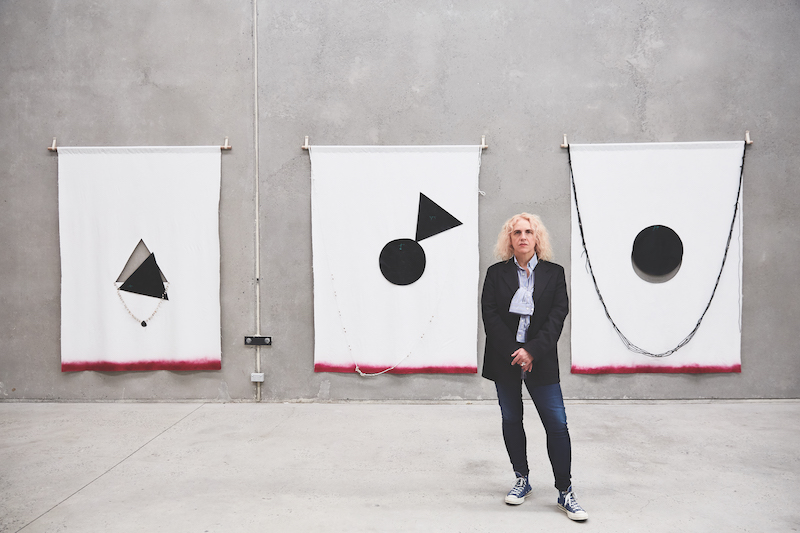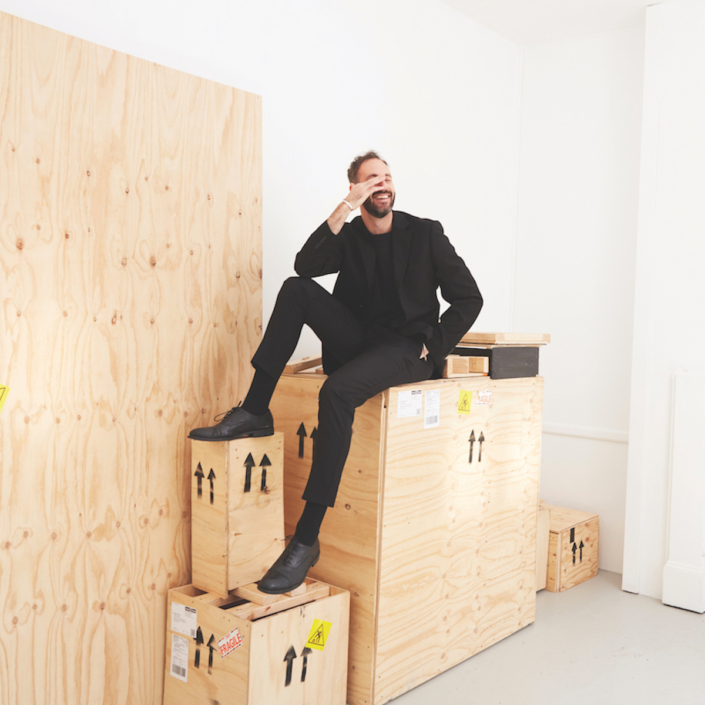The Commercial: Talent and Nous
Far from its humble beginnings in a small shopfront in inner-city Sydney, The Commercial – now occupying a nine-metre-high concrete warehouse – is all grown up.
Words: Tai Mitsuji
Photography: Nick de Lorenzo
“I PUT THE GALLERY TOGETHER on the smell of an oily rag, extremely talented artists and the faith that a lot of experience and hard work would make it sustainable and grow in the long term,” recalls Amanda Rowell, describing the birth of The Commercial in 2012. Back then, the gallery occupied a small shopfront space in the inner-Sydney suburb of Redfern. I can still remember visiting an opening and standing on the street outside, waiting for a pocket of precious space to reveal itself within. “We were bursting at the seams,” recounts Rowell. “It was a great place to start, but we had outgrown it.” Today, the gallery could not look more different; its new home in Sydney’s Marrickville has concrete walls that reach almost nine metres to the ceiling, and a generosity of floor space that would never leave anyone on the sidewalk. Stepping into The Commercial, one gets the distinct sense that those oil fumes have led Rowell in the right direction, as seven years later the gallery is clearly not only sustaining – but thriving.
“I conceived of the new space as something like a film set of a gallery,” Rowell explains to me. “It’s about how things look online, how they look on social media.” Indeed, despite the in-person impact of The Commercial, Rowell explains that “most of our sales are to people who never set foot in the gallery”. I see that as a bit of a shame for those folks, because the building itself is something of an aesthetic experience. Much like the gallerist herself, the space feels considered and thoughtful – a place where everything has been an active choice rather than a concession.
The previously paint-coated walls have been sanded back to reveal a rawer concrete finish, and Rowell has installed skylights in place of electronic lighting, so that the sole source of luminance is natural. “Since Daylight Saving finished, we’ve started closing at five, because we’re beholden to the elements,” says Rowell. “But why would you spend a huge amount of money on lights that are just not going to be as good as the natural light?”
Despite being a commercial space, the gallery possesses the kind of architectural gravitas typically reserved for public institu- tions and buildings with cornerstones. It’s perhaps unsurprising then that Rowell has been so successful at placing her artists in these very establishments, with the likes of Agatha Gothe-Snape, Archie Moore, Mitch Cairns and Yasmin Smith currently enjoy- ing particular success. In the next few months alone, Gothe-Snape has two separate solos opening at Brisbane’s Institute of Modern Art in June and the Perth Institute of Contemporary Arts in July, while Smith is working towards her solo Cosmopolis #2.0 at the Centre Pompidou, Paris, in October. Other stable artists making names for themselves in Australia and abroad include Bonita Bub, Patrick Hartigan, Anna Kristensen, Narelle Jubelin, Lillian O’Neil and Oscar Perry, among others.
“Since day one, we have sold a lot of work to museums,” Rowell reflects. “I have lost count, but it’s something like 130 works in seven years.” Yet Rowell also views these transactions as going beyond their pecuniary significance. “Selling art [beyond its value as a commodity] is largely about narratives. It’s about the stories around the work, and around the artist,” she explains. When I ask Rowell what draws her to an artist (and their story), she answers: “The combination of raw artistic talent and the nous of how to channel that talent professionally.” And it occurs to me that she could be describing herself: talent and nous.
This article was originally published in Art Collector issue 89, JUL – SEP 2019.






